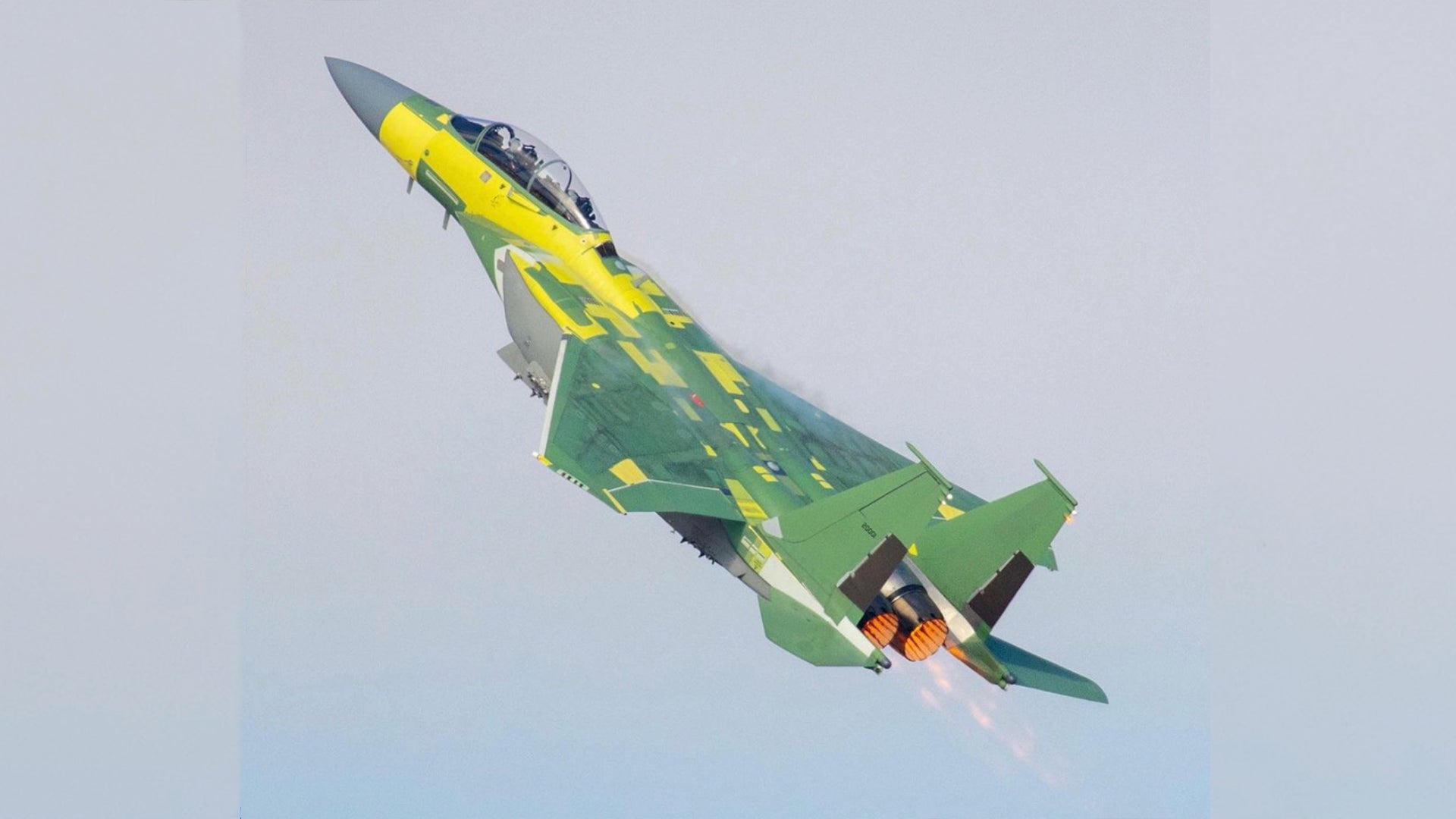The first of the U.S. Air Force’s new F-15EX Eagle fighter jets took to the air today. The new fighter, described as the most advanced version of the F-15 ever built, made its maiden flight from St. Louis, Missouri, departing at 1:53 pm local time in a dramatic “Viking takeoff,” almost 50 years after the original F-15A prototype was first flown. The War Zone was first to unveil the F-15X initiative and describe its implications back in July of 2018.
The fantastic Viking Aero Images (Alex Farwell) has provided us with amazing shots, one seen at the top of this story, of the F-15EX’s “Viking Takeoff” during its first-ever departure, as well as its recovery as the historic test flight mission came to a close.
Serial number 20-0001 is the very first aircraft that the service purchased in the previous fiscal cycle and we got our first glimpse of it last summer when the Air Force announced that Boeing had won a contract worth nearly $23 billion to work on the program, which is designed to fulfill an urgent requirement for new-build fighters.
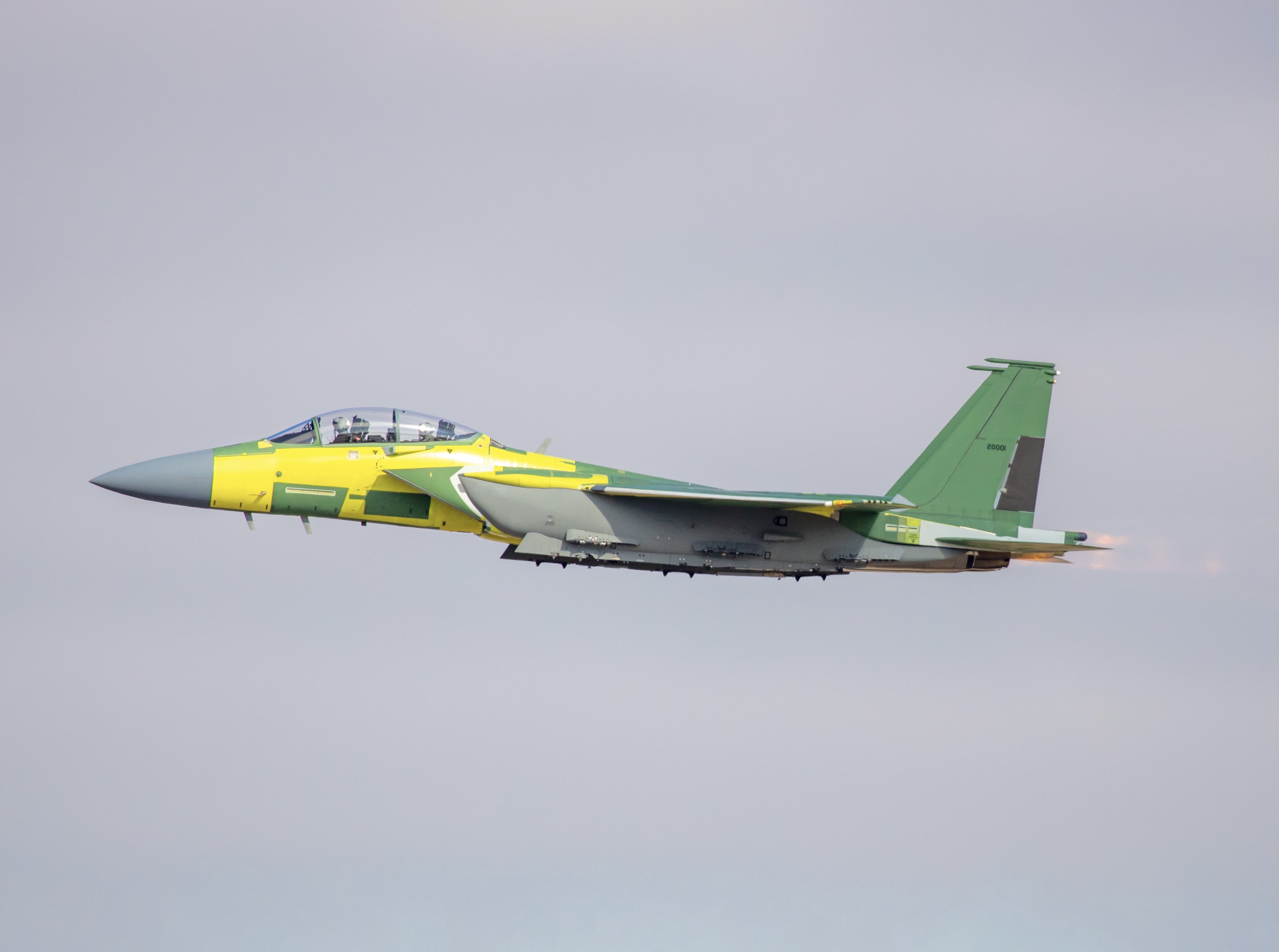
Of the roughly $23 billion covered by the deal announced by the Air Force on July 13, 2020, $1.2 billion is covering the delivery of the first lot of eight aircraft for which Congress approved funding in the Fiscal Year 2020 defense budget.
The Air Force has also requested money to buy an additional 12 aircraft in the 2021 Fiscal Year and hopes to purchase a total of 76 F-15EXs over the five-year Future Years Defense Program. Ultimately, the aims to acquire at least 144 of the jets as it sets about replacing its older F-15C/D Eagles that are rapidly running out of airframe hours. That number could grow in the future as the flying force balances its needs for low-observable fighters and advanced 4th generation types. Even the possibility of replacing the F-15E with the F-15EX has been floated unofficially.
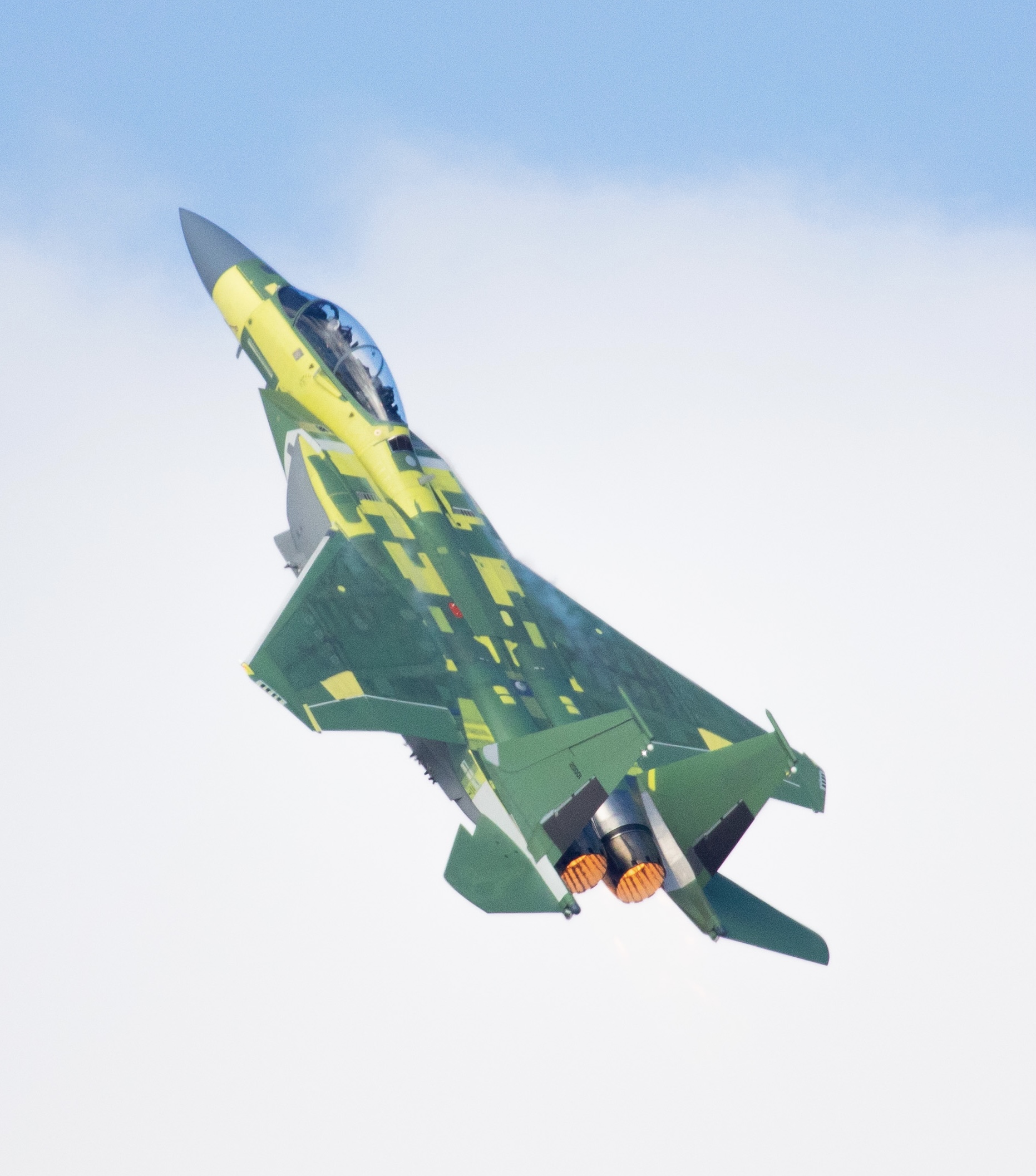
Last June 30, the Air Force awarded a separate contract to General Electric for an unspecified number of F110-GE-129 engines to power at least some of the initial batch of F-15EXs, citing an “unusual and compelling urgency.” Pratt & Whitney is also expected to submit its F100-PW-229 engine as an alternative under a planned open competition. You can read more about the issues surrounding the selection of the F-15EX’s engines in this recent War Zone piece.
“The F-15EX is the most affordable and immediate way to refresh the capacity and update the capabilities provided by our aging F-15C/D fleets,” General Mike Holmes, head of Air Combat Command, said last summer. “The F-15EX is ready to fight as soon as it comes off the line.”
With that in mind, the Air Force can expect to get its hands on this new hardware sooner rather than later. General Holmes has talked of airbases currently operating the F-15C/D being able to “transition to the new EX platform in a matter of months versus years.” Boeing, for its part, has said that pilots and mechanics should be able to convert to the new aircraft in “a matter of days as opposed to years.”
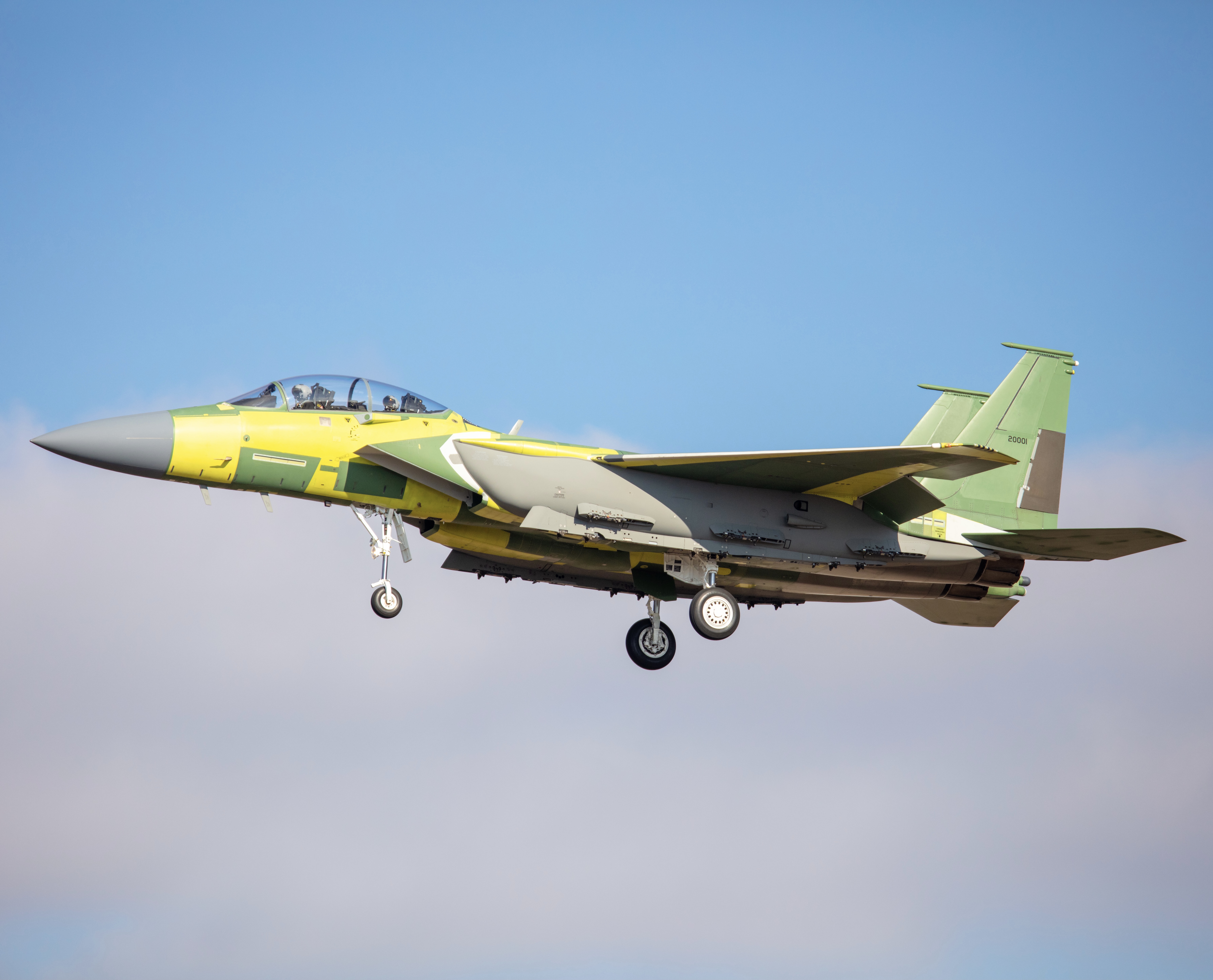
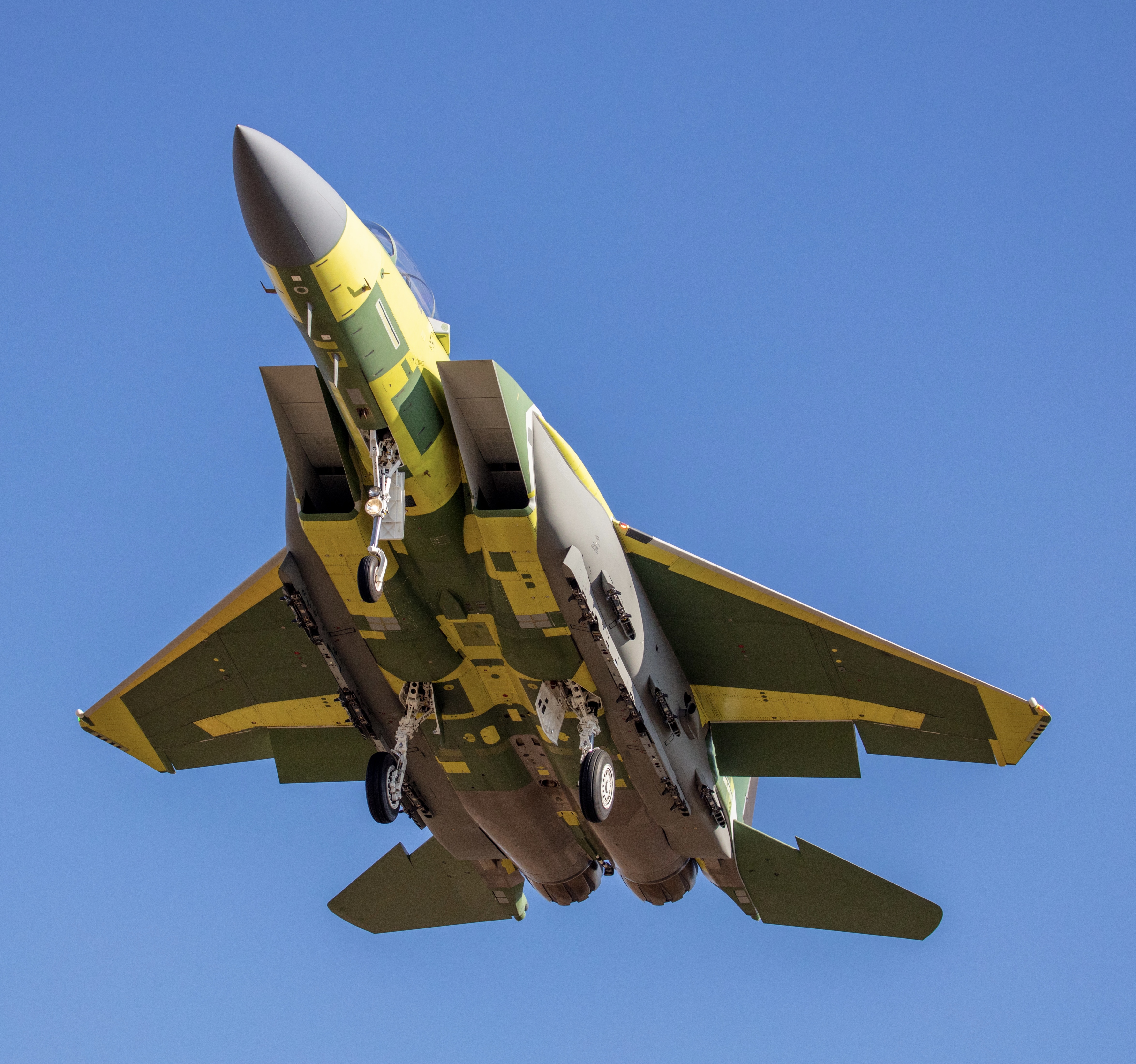

Before any of the new Eagles arrive on the front line, however, the jet will have to be rigorously tested at Eglin Air Force Base in Florida, which will receive the first eight examples, including the first two in the second quarter of Fiscal Year 2021, which began on January 1, 2021. The remaining six aircraft are scheduled to arrive in the 2023 Fiscal Year.
Thereafter, the Air National Guard’s formal F-15C/D training unit, the 173rd Fighter Wing based at Kingsley Field in Klamath Falls, Oregon, is scheduled to receive the new type, followed by a first operational unit, the 123rd Fighter Squadron, the “Redhawks,” of the 142nd Fighter Wing, based in Portland, Oregon. This is scheduled to occur in 2023, under plans that you can read more about here. Beyond that, the Massachusettes, Louisana, and California based F-15C/Ds could all potentially transition to the new airframe as well, but the F-35A remains another option for these units.
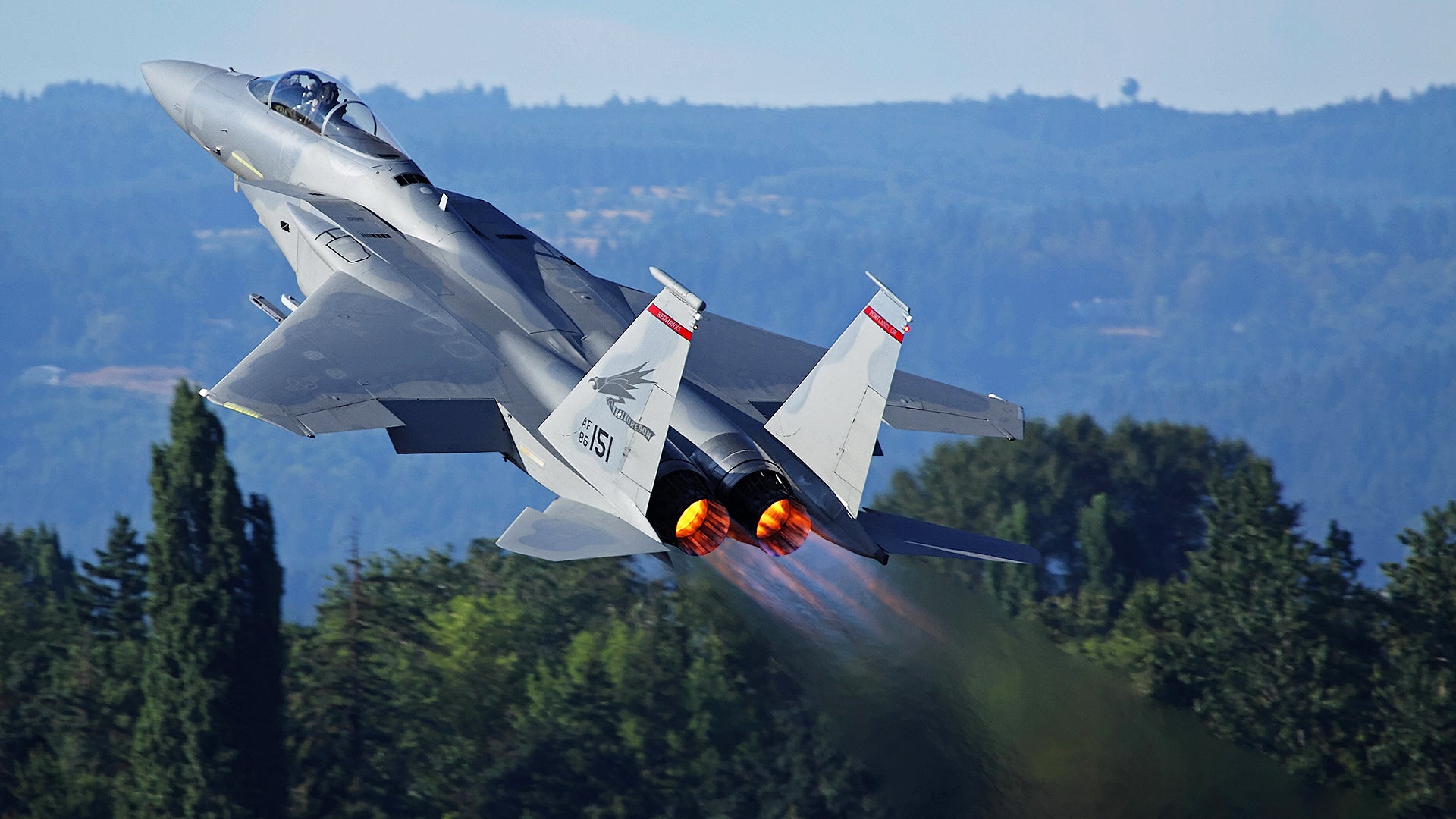
As to what the F-15EX will bring to the Air Force, compared to the older F-15C/Ds, the main difference is under the skin. The Open Mission Systems (OMS) architecture will allow the rapid insertion of the latest aircraft technologies. The F-15EX will also have fly-by-wire flight controls, a new electronic warfare system, advanced cockpit systems — including the new low-profile HUD that was developed for the F-15QA for Qatar, as well as the latest mission systems and software capabilities available for legacy F-15s. You can read more about the F-15EX and its capabilities in this past War Zone story.
Beyond replacing the F-15C/D, the role of which, according to the Air Force is to “gain and maintain air supremacy over the battlefield,” the new F-15EX promises to offer a range of new, potentially transformative capabilities. These could include serving as a “weapon truck” carrying much larger weapons loads than fifth-generation types, as well as physically bigger munitions, such as large hypersonic weapons now in development but unable to be accommodated inside a fifth-generation fighter weapons bay.
As we mentioned earlier, this kind of versatility could yet open the door to the F-15EX eventually replacing the F-15E Strike Eagle, as well as the F-15C/D. This option, which The War Zone
has discussed in the past, would not be without controversy, though, since it could further threaten the Air Force’s longstanding plans to procure 1,763 F-35A airframes. It is noteworthy, however, that the F-15EX will be delivered with a lot of equipment in common with the upgraded F-15E, including the Raytheon AN/APG-82(V)1 Active Electronically Scanned Array (AESA) radar, the new Advanced Display Core Processor (ADCP) II, and the EPAWSS self-protection system.
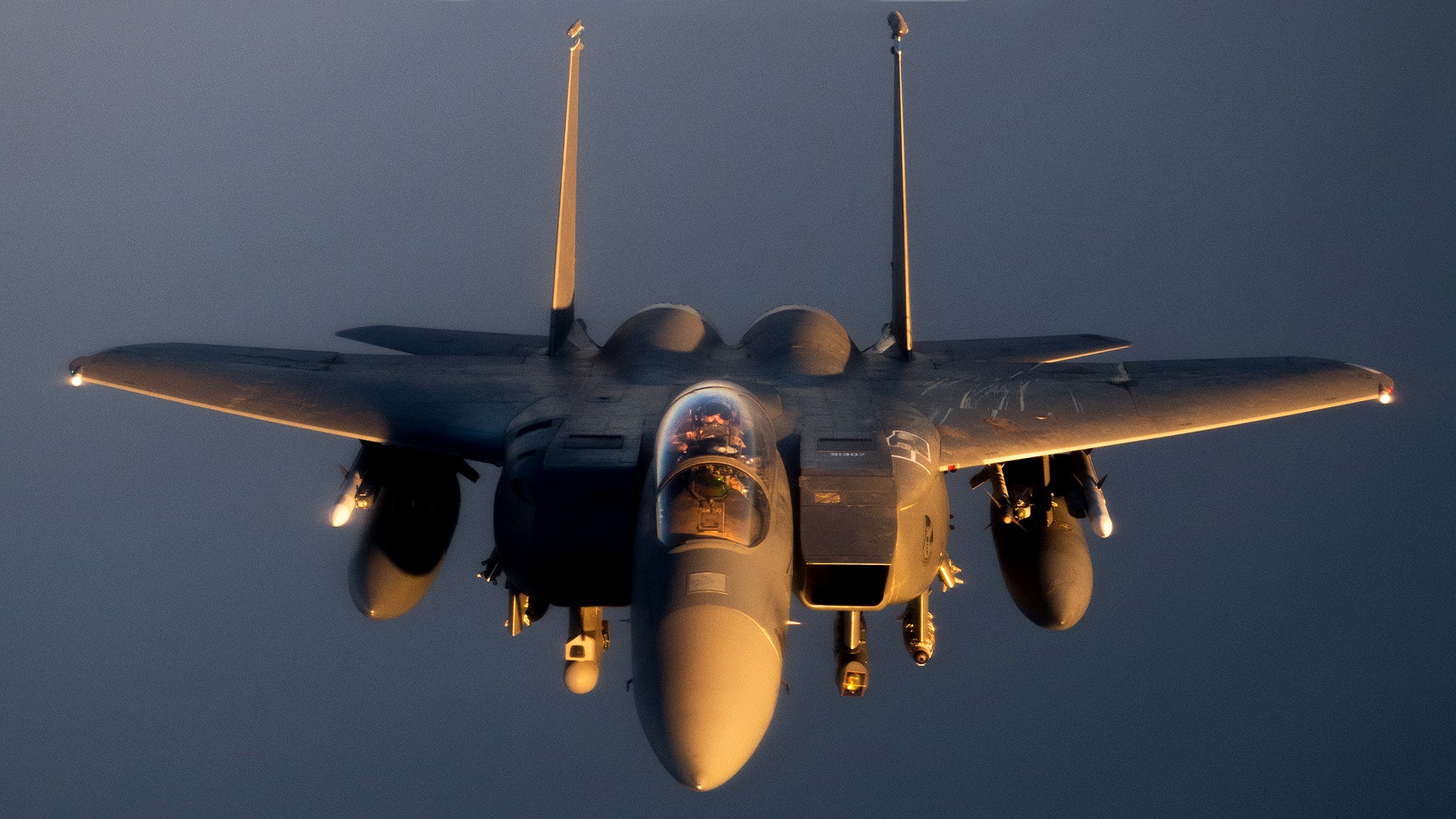
Outside the United States, Boeing has already offered the F-15EX for export, targeting an Indian Air Force requirement for new fighters, although in that country the aircraft will face competition from multiple other options, not least Boeing’s own F/A-18E/F Super Hornet, which is also in the running and which could potentially knock out the F-15EX.
Whatever path the F-15EX takes once in service with the U.S. Air Force, and potentially with other nations too, the fact that the service will soon start to receive yet another iteration of the venerable Eagle goes to show just how much potential was inherent in that very first F-15A, which took to the skies nearly half a century ago. With the new F-15EXs having a whopping 20,000-hour airframe life, they are likely to serve for well over half a century.
Author’s note: We updated this piece shortly after publishing with Alex Farwell’s incredible photos of this historic flight. A huge thanks to him for sharing his work with our readers and make sure you check out all of his awesome shots over on Instagram.
Contact the author: thomas@thedrive.com
